Table of Contents
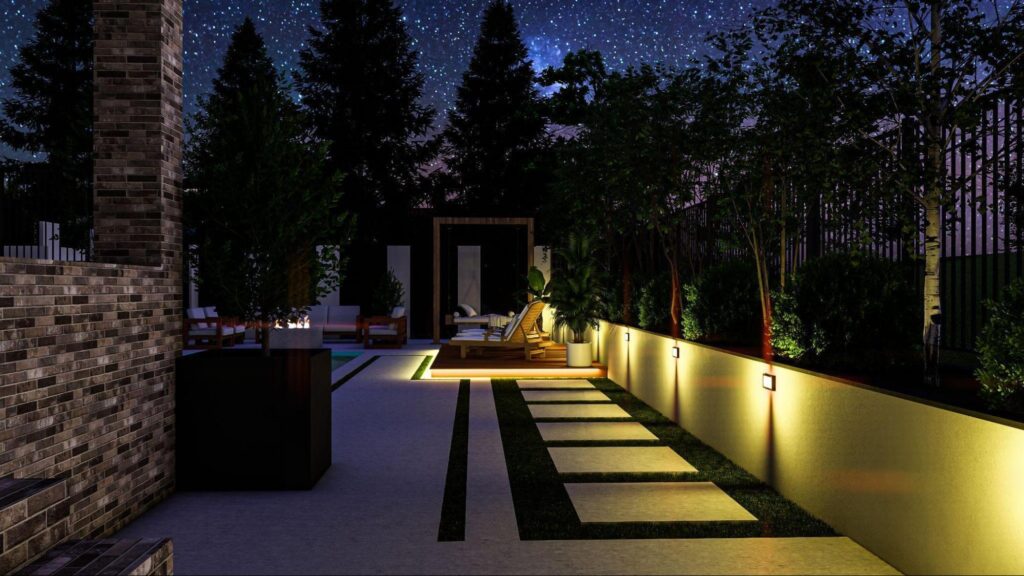
The difference between an ordinary outdoor space and an extraordinary one often comes down to lighting. While daytime reveals your garden’s details, evening lighting creates emotional experiences that transform how you feel in your outdoor spaces. These 5 outdoor lighting ideas that create instant ambiance deliver dramatic results without requiring electrical expertise or significant investment.
1. String Lights: The Instant Ceiling Effect
Nothing creates an immediate atmosphere like string lights suspended overhead. Their magic comes from defining vertical space – essentially creating an outdoor ceiling that makes open areas feel like intimate rooms.
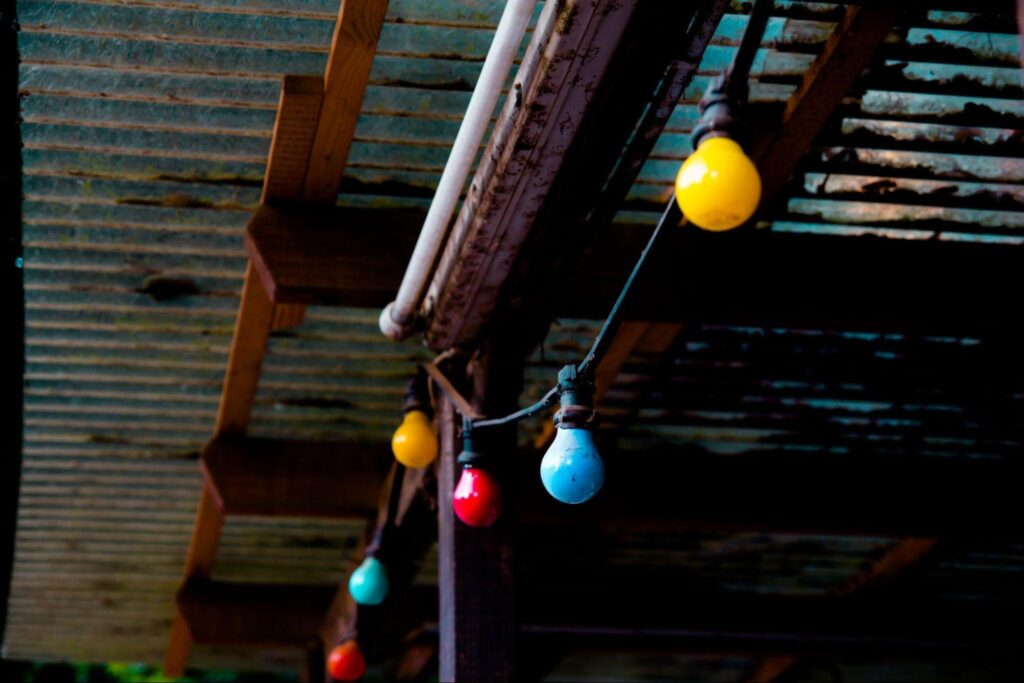
The key to sophisticated results is installation height and pattern. Position lights at least 9-10 feet high so they don’t feel crowded. For larger areas, install lights in a crosshatch pattern rather than concentric circles to create even illumination throughout the space. Use guide wires or steel cables for support rather than relying solely on attachment points – this prevents sagging and maintains straight lines that enhance the architectural effect.
String light technology has evolved dramatically from fragile Christmas lights. Modern commercial-grade options feature weatherproof LEDs rated for year-round outdoor use. The small additional investment in shatterproof bulbs and reinforced wiring pays dividends through longevity and reduced maintenance.
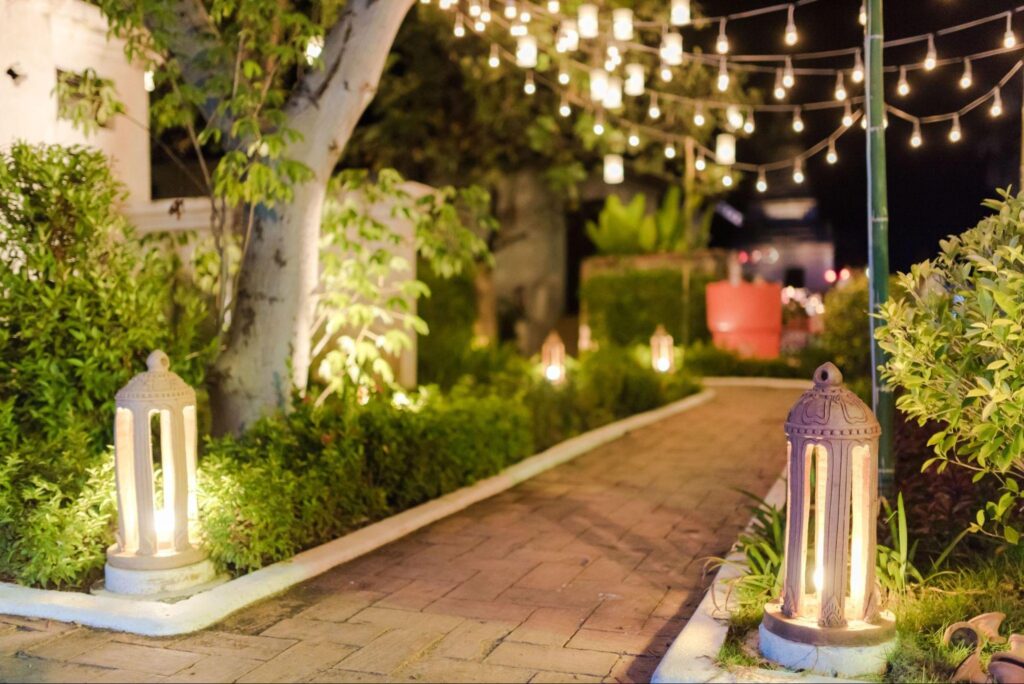
For maximum versatility, connect string lights to dimmer switches that allow atmosphere adjustment from bright entertaining light to subdued evening ambiance. Many newer options include smartphone-controlled dimming or even color-changing capabilities that transform outdoor experiences with minimal effort.
2. Pathway Lighting: Beyond Basic Safety
While pathway lighting’s practical value in preventing trips and falls is obvious, its atmospheric contribution often goes unrecognized. Strategic path lights create invitations and mystery that pull people through your landscape while highlighting textural elements typically lost after sunset.
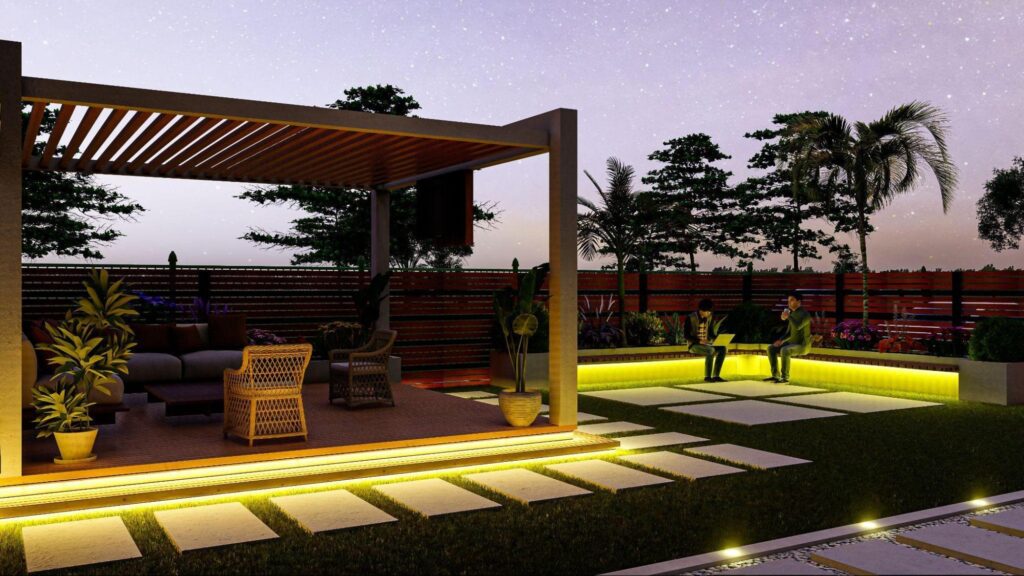
The most common mistake is the uniform spacing that creates an “airport runway” effect. Instead, place lights at varying intervals that highlight specific features – a dramatic plant, path intersection, or material change. This intentional irregularity creates visual rhythm while subtly guiding movement through the space.
Light placement relative to paths matters significantly. Positioning fixtures 8-10 inches away from path edges allows proper illumination without creating hazardous obstacles. For natural-looking results, stagger lights should be placed on alternating sides rather than creating straight lines down both edges.
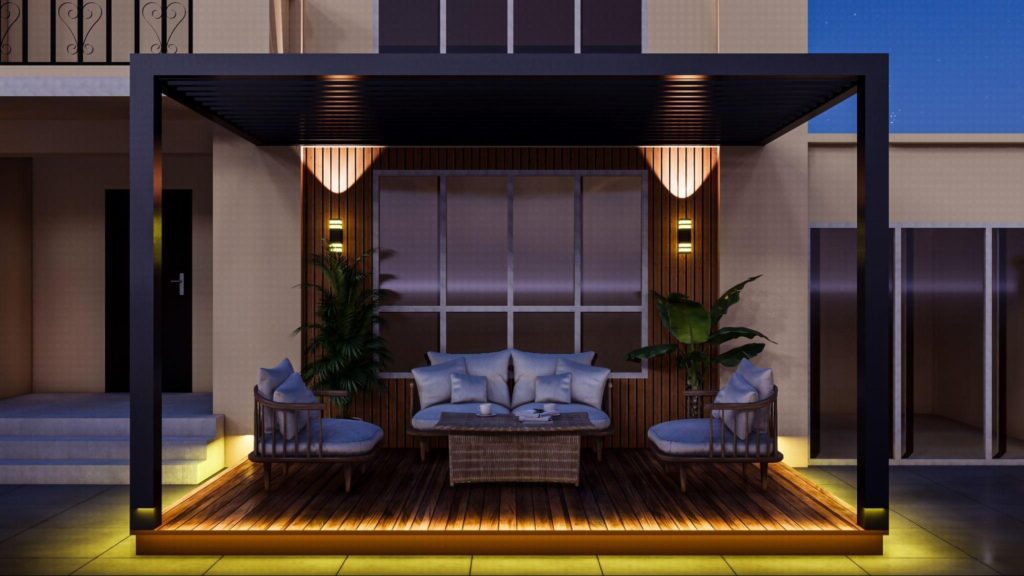
The height and light dispersion pattern dramatically affect the atmosphere. Lower fixtures with shielded tops direct light downward, creating intimate pools that preserve the night’s darkness between them. Taller fixtures that cast broader patterns produce more uniform illumination appropriate for high-traffic areas.
3. Uplighting: Transforming the Ordinary into Extraordinary
Perhaps no lighting technique delivers more drama for less effort than uplighting. This approach positions fixtures at ground level, directing light upward through trees, architectural elements, or garden features. The resulting shadows and highlighted textures transform even common landscape elements into sculptural art after dark.
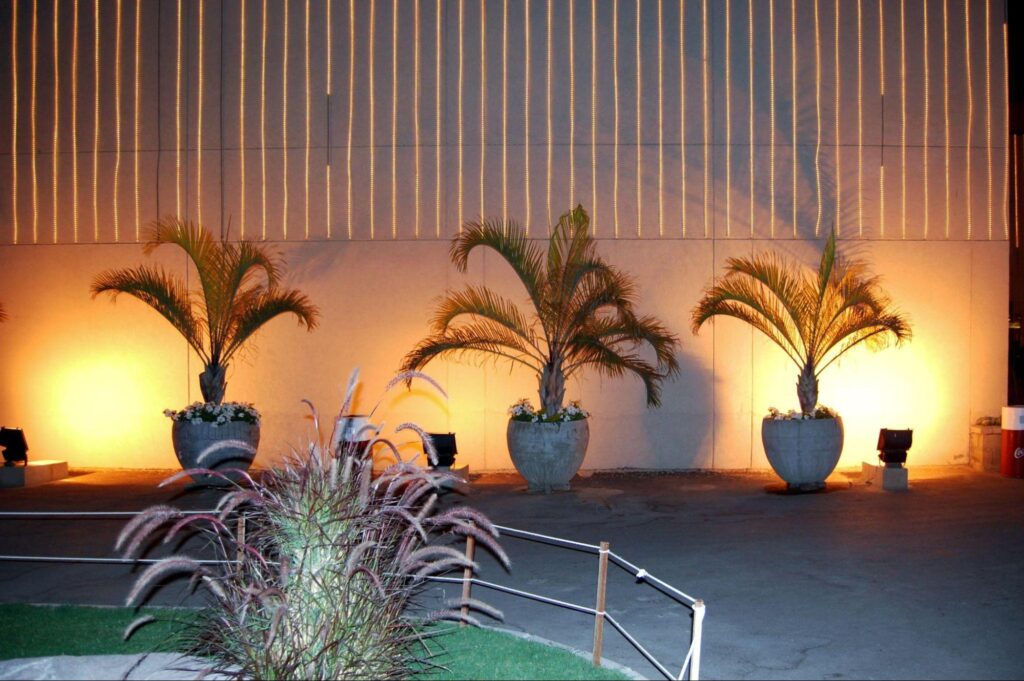
The most effective uplighting creates contrast zones rather than attempting to illuminate entire spaces evenly. Select 3-5 focal features rather than lighting everything available. This selective approach creates a visual hierarchy while preserving the darkness that makes highlighted elements stand out dramatically.
For trees, position lights approximately 12-18 inches from the trunk, aiming upward to highlight branching structure and foliage. For multi-trunk specimens, place lights between trunks aiming outward to create depth through cross-lighting. Experiment with fixture distance and angle – even minor adjustments dramatically change the effect.
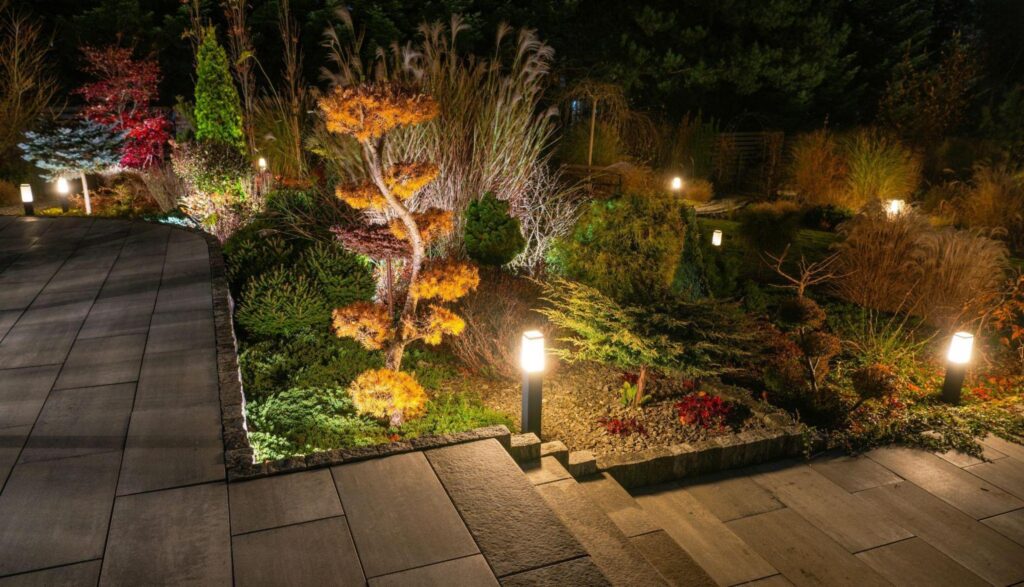
Beyond vegetation, consider architectural elements that gain character through uplighting. Garden walls reveal textural details invisible during daylight when light washes across their surfaces. Pergolas and arbors cast fascinating shadow patterns when illuminated from below. Even simple fence panels become design features rather than boundaries when strategically lit.
4. Water and Fire Features: Dynamic Light Sources
Unlike static electric lighting, water and fire features provide dynamic illumination that changes constantly, creating living light that captivates attention and creates meditative focal points.
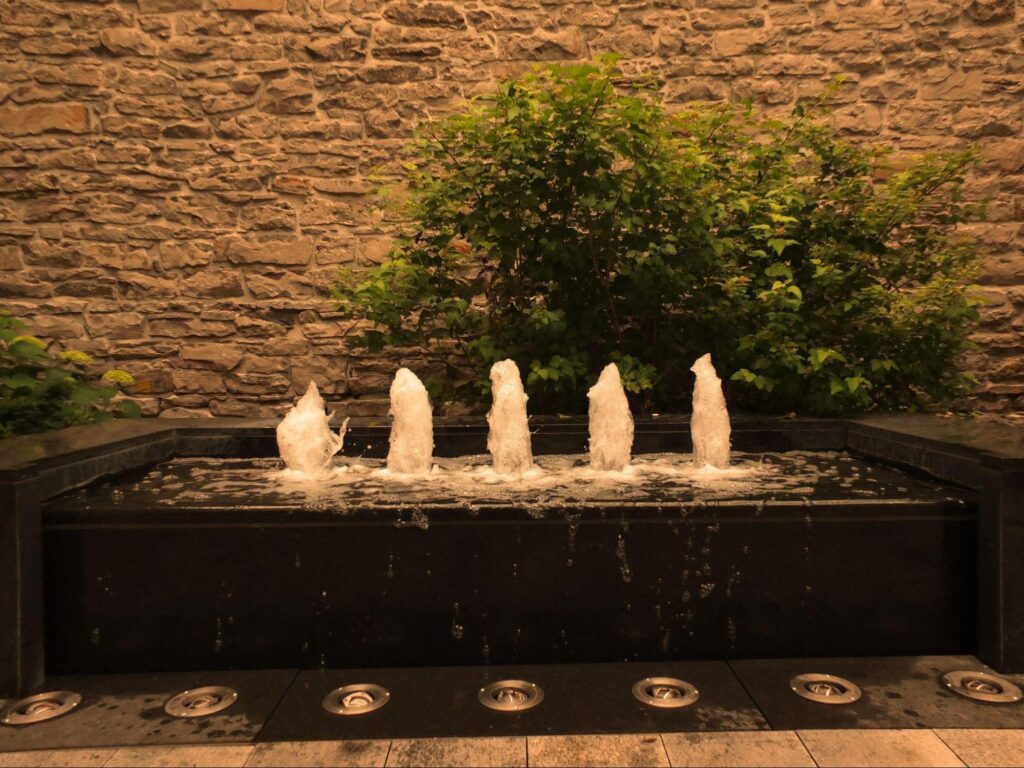
Fire features create an unmatched atmosphere through their primal appeal and naturally correct color temperature. From simple fire bowls to elaborate fire tables, these elements provide the light that makes everyone look their best while creating natural gathering points. Modern gas-fed options offer instant on/off convenience while eliminating smoke concerns, though traditional wood fires deliver superior crackling sound and aroma.
Water features transform through simple submersible lighting. Even modest fountains become magical when illuminated from within, with moving water amplifying and refracting light in constantly changing patterns. Color-changing LED options can transform water features completely for special occasions or seasonal celebrations.
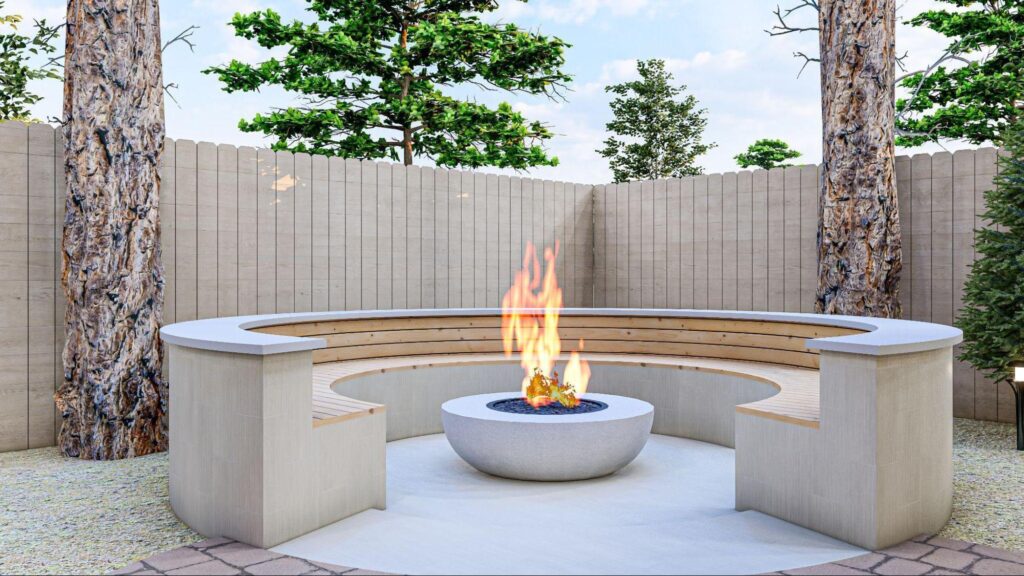
The combination of fire and water features creates especially compelling night gardens. Position these elements to complement rather than compete with each other, using one as a primary focus while the other provides secondary visual interest. This layered approach creates landscapes that reveal different aspects as people move through the space.
5. Shadow Play: The Art of Controlled Darkness
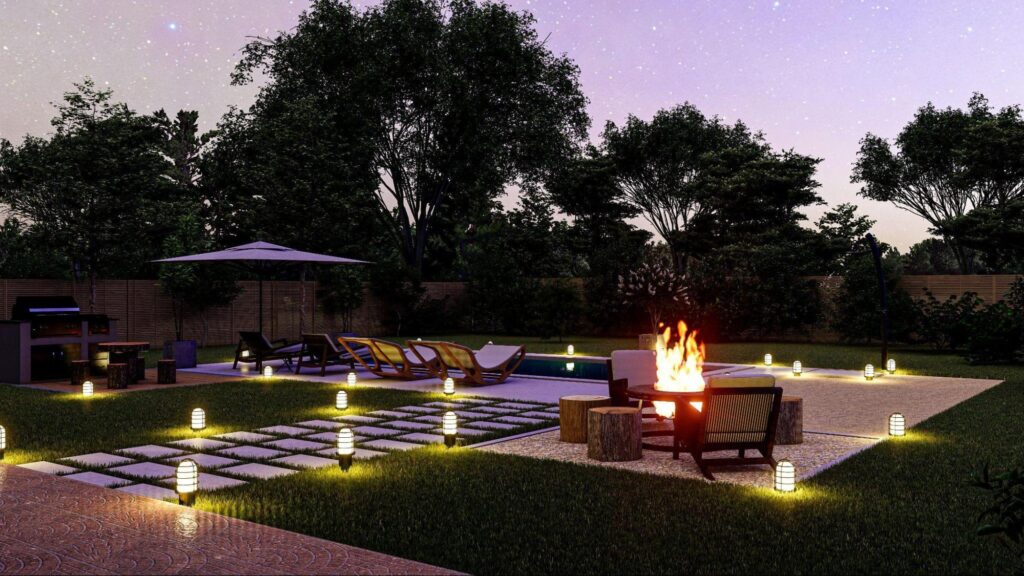
The most sophisticated outdoor lighting doesn’t just illuminate – it deliberately creates shadows that add mystery and depth. This approach treats darkness as a design element rather than something to be eliminated.
To create intentional shadow play, position light sources to shine through plants with interesting structures like ornamental grasses, airy shrubs, or trees with distinctive branching patterns. The resulting shadows cast on walls, patios, or adjacent surfaces create constantly moving artwork as breezes animate the plants.
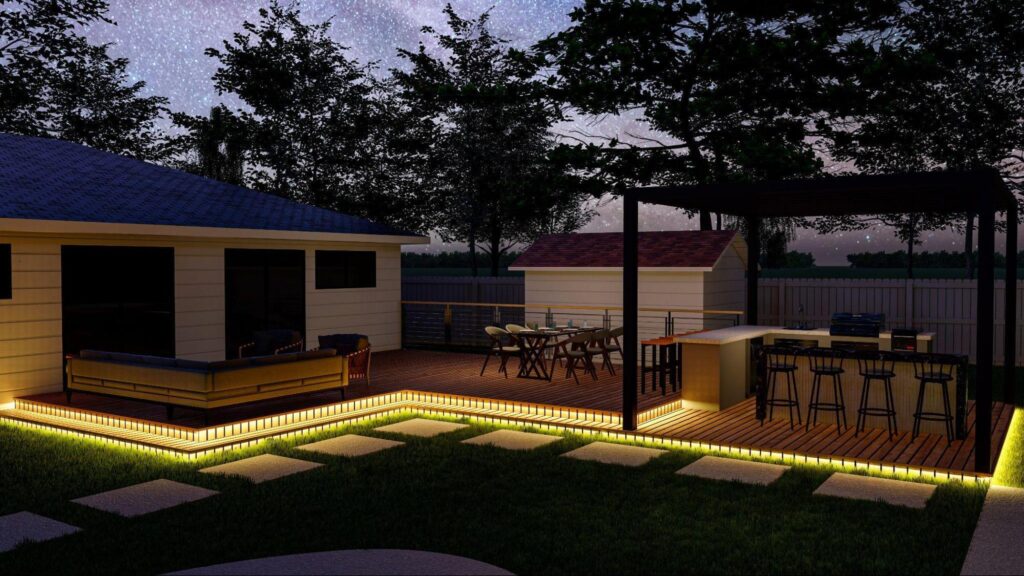
For architectural interest, grazing light across textured surfaces at sharp angles reveals details invisible under direct illumination. Stone walls, textured stucco, or decorative screens transform dramatically when light strikes them from sides rather than directly. This technique requires precise fixture placement but delivers dramatic results from minimal wattage.
Consider the surfaces receiving shadows as carefully as the elements creating them. Light-colored walls, fences, or screens function as projection surfaces that highlight shadow detail. Strategic placement of these receiving surfaces enhances the impact of shadow-casting elements positioned nearby.
Practical Considerations for Maximum Impact
The most effective outdoor lighting combines artistic vision with practical implementation. Today’s systems offer unprecedented simplicity through solar, battery, and low-voltage options that eliminate complex electrical work.
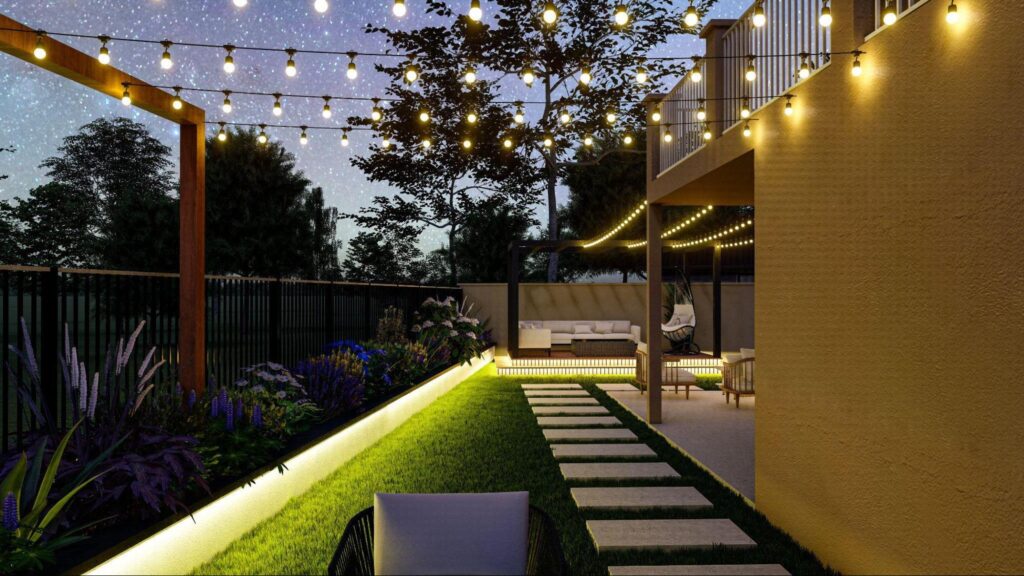
For truly transformative results, focus on light quality rather than just quantity. Color temperature dramatically affects the atmosphere – warmer lights (2700-3000K) create inviting, flattering environments while cooler temperatures can feel harsh and institutional. Similarly, a higher color rendering index (CRI) ensures that plants, furnishings, and people appear natural rather than artificial.
Consider layering multiple lighting types for complete environments. Ambient lighting provides general illumination, while accent lighting highlights specific features. Task lighting serves functional needs in cooking or dining areas. This layered approach creates rich environments that serve multiple purposes while maintaining a consistent atmosphere.
Remember that successful outdoor lighting isn’t static – it should evolve with seasons and occasions. Supplemental temporary lighting for gatherings, holiday-specific elements, or seasonal adjustments keeps outdoor spaces feeling fresh and responsive to changing needs. This dynamic approach ensures your outdoor lighting creates not just ambiance but experiences that draw people outside consistently throughout the year.

Hi, I’m Christian, a 43-year-old father of two and a lifelong DIY enthusiast. My workshop is where I spend countless hours experimenting, upgrading, and fine-tuning. Sharing my experiences and practical advice is my way of helping others create homes they love.




